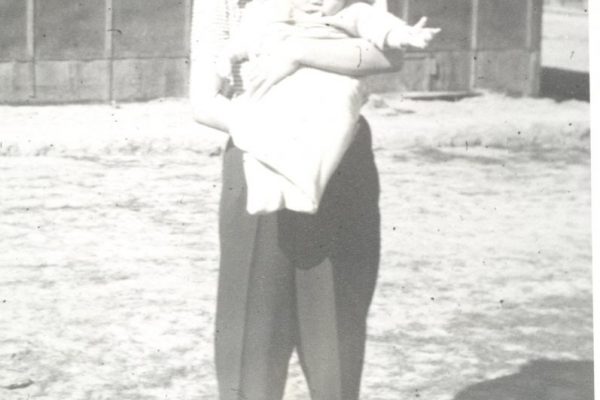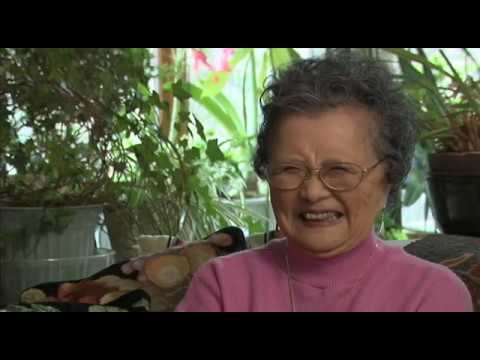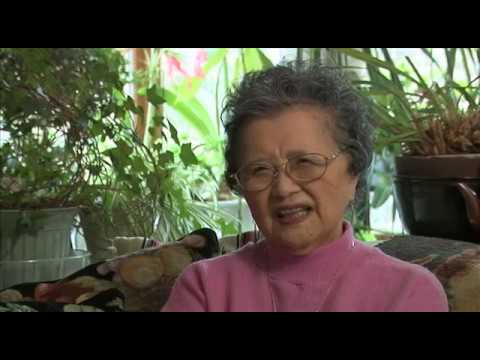Manzanar first days, basic facilities, cleaning house – Kay Nakao (OH0022)
Transcript
Well, we had the cots and just the oil heater. Because in the evenings in desert it gets real cold, extreme. So we got oil every day for our heaters and that’s what we used. And then of course we had to go to, they had a latrine, so we had to go out there to, you know, the toilets, and brush our teeth and wash our face and everything, and the shower was there. Yeah, the shower was connected, yeah. And then, of course, the laundry room was separate.
So there was absolutely no privacy, and we had to… because all, everyone in the family was just in this one big room, one unit, and we had no tables or chairs or anything. My dad went out and scrounged around for scrap lumber, and he made a bench… crude, but it was a bench, and a table, had four legs, so it worked. And of course, all our toiletries, we just put it between the two by fours, which was showing, there was no insulation, no inside wall or anything, it’s just one wall with all this two by fours showing. So we just put everything on the ledge, because there was no closet or anything, just one room, unit.
And then, of course, housecleaning was easy. When you had the dust storm and everything, you know, you just put whatever is on the floor on the bed, and just run a hose through it and it all just goes down to the sand again. But later on, they put linoleum down for us, so then we didn’t, you know, we couldn’t use the hose to clean the room. But it worked.
We all went to the mess hall and you know, the institutional food is, it’s hard to cook for big mass. And so when you think about it now, we shouldn’t have complained, but we did. And we all got, we all lined up for all the meals. And then as time went on, we learned that, “Oh, the Block 9 cook is real good,” they used the same things, but it depends on the cook how things turned out, right? So we used to stop there, some of us that went to work, ’cause I, I went to Block 44 to the hospital to work. I was working, I got a job at the Public Health Department, so on the way back, for dinner, we’d stop at Block 9 instead of coming home to Block 3. Well, later on, they sent out a notice saying, “Everybody that belong in your block, eat in your own mess hall.” So, but sometimes, we didn’t obey that, we just snuck in.





